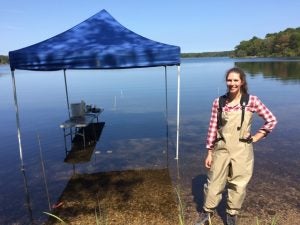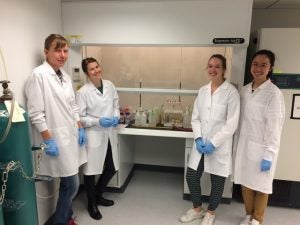![]()
Environmental Fate & Transport
Environmental Engineering: Exposure assessment and chemometrics of PFAS
Lead: Elsie Sunderland, Harvard John A. Paulson School of Engineering and Applied Science, Harvard T.H. Chan School of Public Health, Department of Earth and Planetary Sciences, Harvard Faculty of Arts and Sciences
The central hypothesis is that environmental exposure sources—drinking water and fish—of PFAS have unique chemical signatures (fingerprint), which can be used to trace PFAS through the environment.
Even though we know that more than 600 sites across the U.S. are contaminated by poly- and perfluorinated alkyl substances (PFAS), the extent of transport away from these sites and entry into human exposure pathways (drinking water and fish) is virtually unknown. This information is critical for assessing human health risks associated with exposures to PFAS from contaminated sites.
This project is measuring a suite of PFAS present in drinking water and fish near the Joint Base Cape Cod (JBCC), a region contaminated by historical firefighter training activity and included in EPA’s National Priorities List as a site warranting further investigation.
This project will:
- Apply novel statistical methods to fingerprint profiles of PFAS measured in fish and drinking water around the JBCC site. PFAS profiles in drinking water and fish are being compared to those from consumer products (that enter wastewater) to identify exposures originating from contaminated sites.
- Leverage long-term research by the U.S. Geological Survey (USGS) near the JBCC site characterizing hydrological flow paths and groundwater geochemistry to better understand how environmental factors influence the transport and transformations of PFAS away from contaminated sites and into drinking water supplies.
- Investigate pathways for the movement of PFAS-contaminated groundwater to surface waters that serve as fish habitat. Researchers are assessing toxicological biomarkers for immune and metabolic responses in exposed fish.
One of the major expected outcomes of this work is a better understanding of the spatial extent of elevated PFAS concentrations in fish and drinking water from contaminated sites, which will improve our understanding of exposed communities’ risks.



